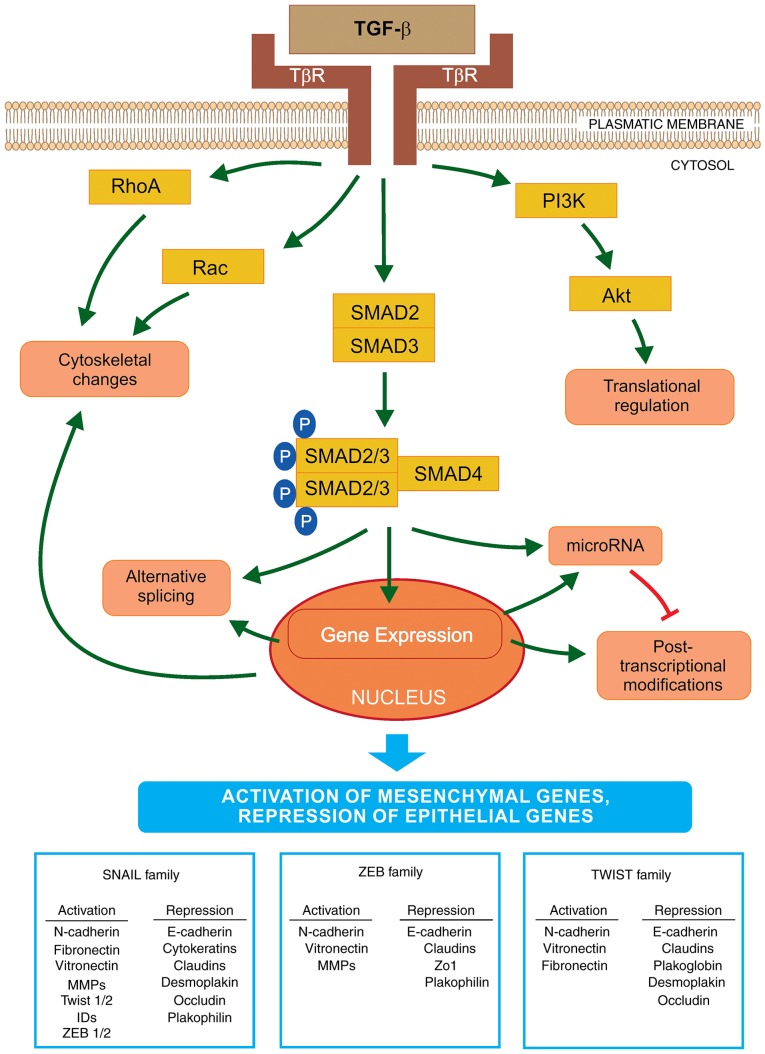Figure 1.
Schematic representation of EMT activation via TGF-β. The initiation and progression of EMT is regulated at all levels of macromolecule synthesis (transcription/post-transcriptional modifications and translation/post-translational modifications). TGF-β binds to its receptors (TβR) and activates EMT via the SMAD signaling pathway. SMAD2/3 are bound to the SMAD4 protein and this phosphorylated complex is translocated into the nucleus where it interacts with transcriptional factors to regulate the expression levels of EMT-specific genes. The key transcriptional factors of EMT are SNAIL, ZEB and TWIST. These are important for the activation or repression of various genes that encode proteins involved in the transition. Furthermore, TGF-β activates microRNA expression that regulates gene expression at the post-transcriptional level. By contrast, EMT transcription regulators may decrease the expression levels of specific microRNAs that affect the EMT factors important in the mesenchymal-like phenotype. Furthermore, TGF-β may induce EMT via a non-SMAD pathway, by activation of the PI3K-AKT signaling cascade, which may lead to translational regulation of EMT factors. TGF-β also initiates a decrease in the number of cell junctions and activates the cytoskeletal reorganization via RHO-GTPases. EMT, epithelial-to-mesenchymal transition; TGF-β, transforming growth factor-β; SNAIL, Snail family zinc finger transcriptional factors; TWIST, Twist family BHLH transcriptional factor; ZEB, zinc finger E-box binding homeobox; PI3K, phosphoinositide 3-kinase.

